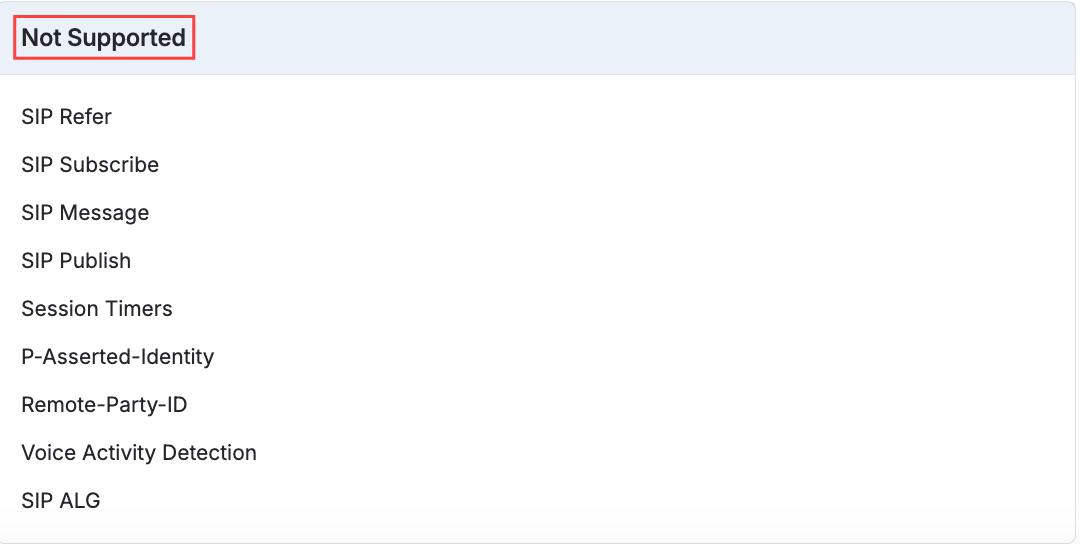Connect Power SIP Trunk to Extension
This feature Connects SIP numbers to the customer's own device, which follows a Bring Your Own Phone (BYOP) approach.
It allows businesses to modernize their telecommunication capabilities without discarding existing investments in PBX infrastructure, providing a bridge between traditional telephony systems and the flexibility and feature set of modern CPaaS.
How to Connect?
- Go to Power SIP Trunk
- Open App MarketPlace
- Select Extension
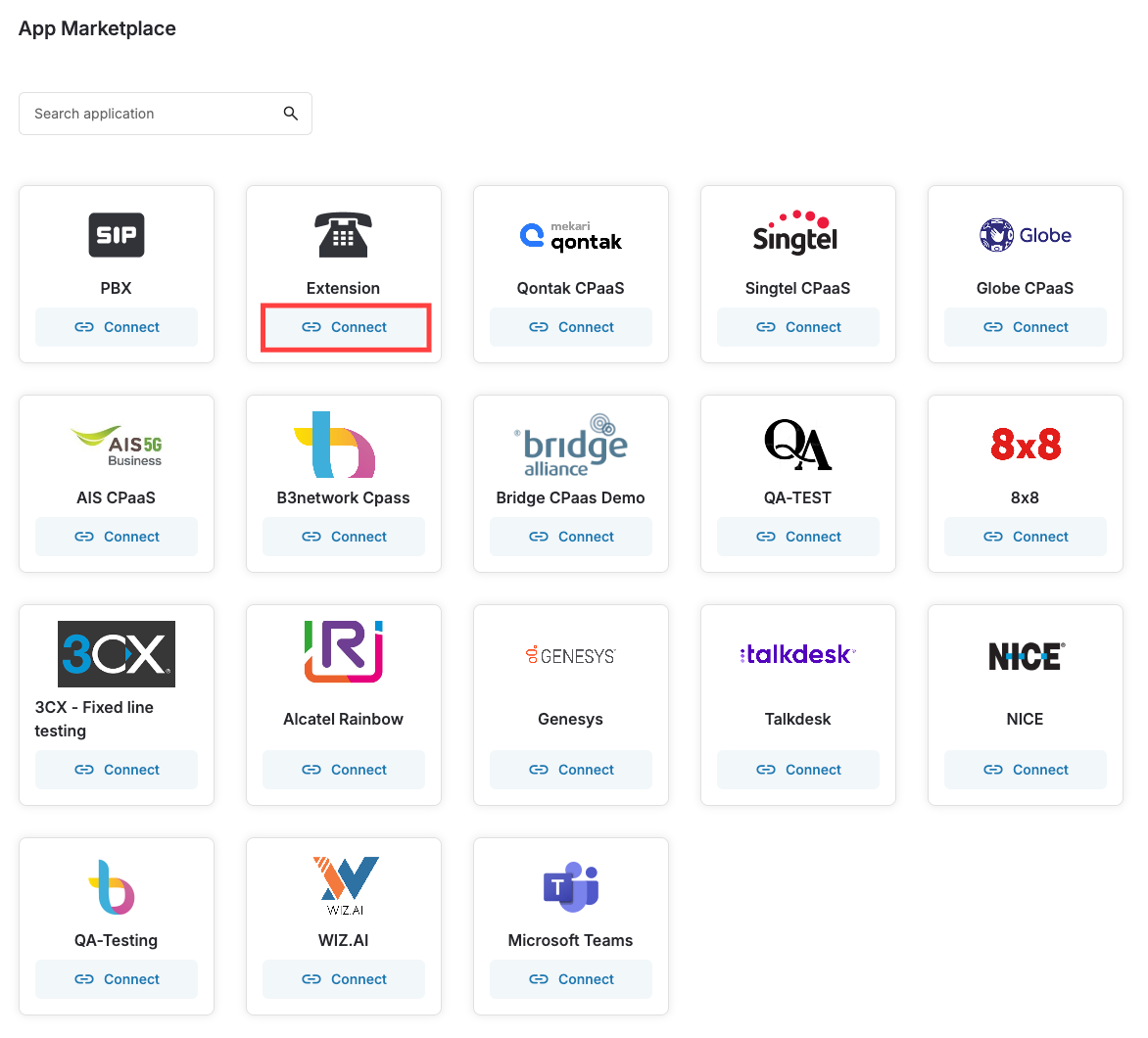 * Pop Up will appear for Connect App
* Pop Up will appear for Connect App
- Click Connect > Done
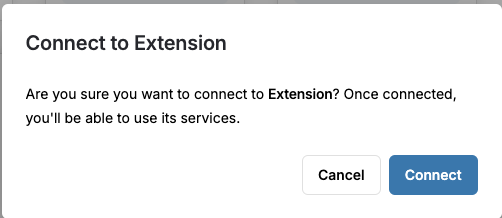 Overview
Overview
In the Overview page, you will see the following configuration:
- The connected Application
- Choose to disconnect when needed
- Label
- Click the Edit button to edit the label
- Subscription UUID
- Click to copy
- Authentication Mode
- Account
- IP
- SIP Username
- Transport Protocol
- IP Peers
- Port
- Server Location
- SIP Server
- CA Certificate
- Click to get certificate (Certificate will be downloaded in a .pem format)
- Inbound Call rule
- Click to set inbound call rules
- Outbound Call rule
- click to set outbound call rules
- DNIS Manipulation
- DDI
- EXT
- Members (Up to 50 members can be added)
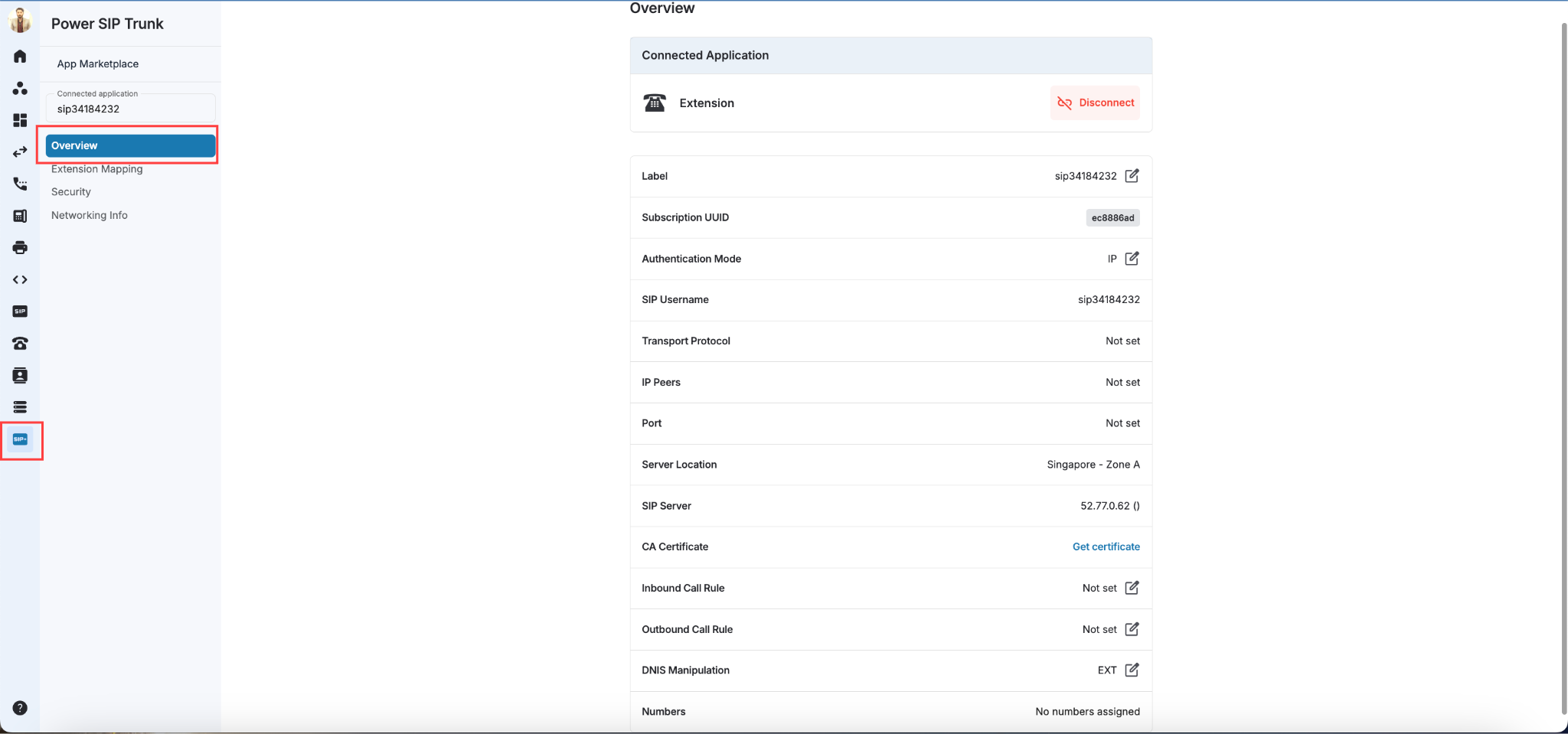 Extension Mapping
Extension Mapping
In this tab, you will actually map your existing PBX with th CPaaS BYOP by adding Mapping Rule.
When you open the tab, you will see:
- Search
- You can search by extension
- Bulk Assignment
- The system only support 1:1 mapping. If the new file contains existing extensions, the configuration will be overridden.
- Download the sample file
- Upload the file
- File size should not exceed 5 MB
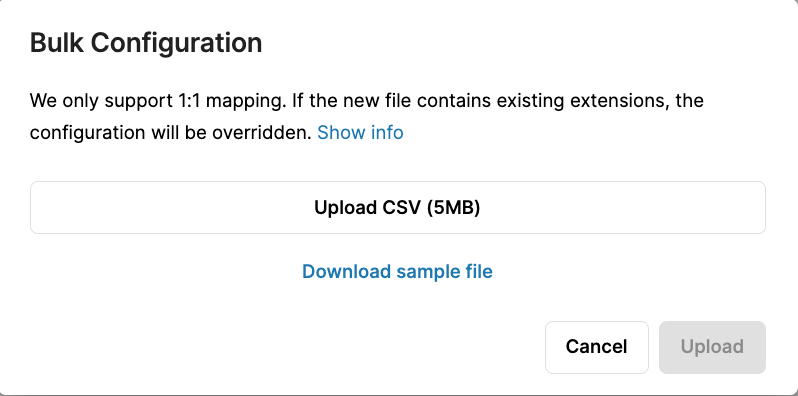 * Add
* Add
- Click to add mapping rule
There are two types of option in “Add Mapping Rule”:
- BYOP
This comes with Phone system license which allows user to use both CPaaS and customer legacy PBX extension - BYOP-H
This comes without Phone system license where user will only be using their own legacy PBX extension
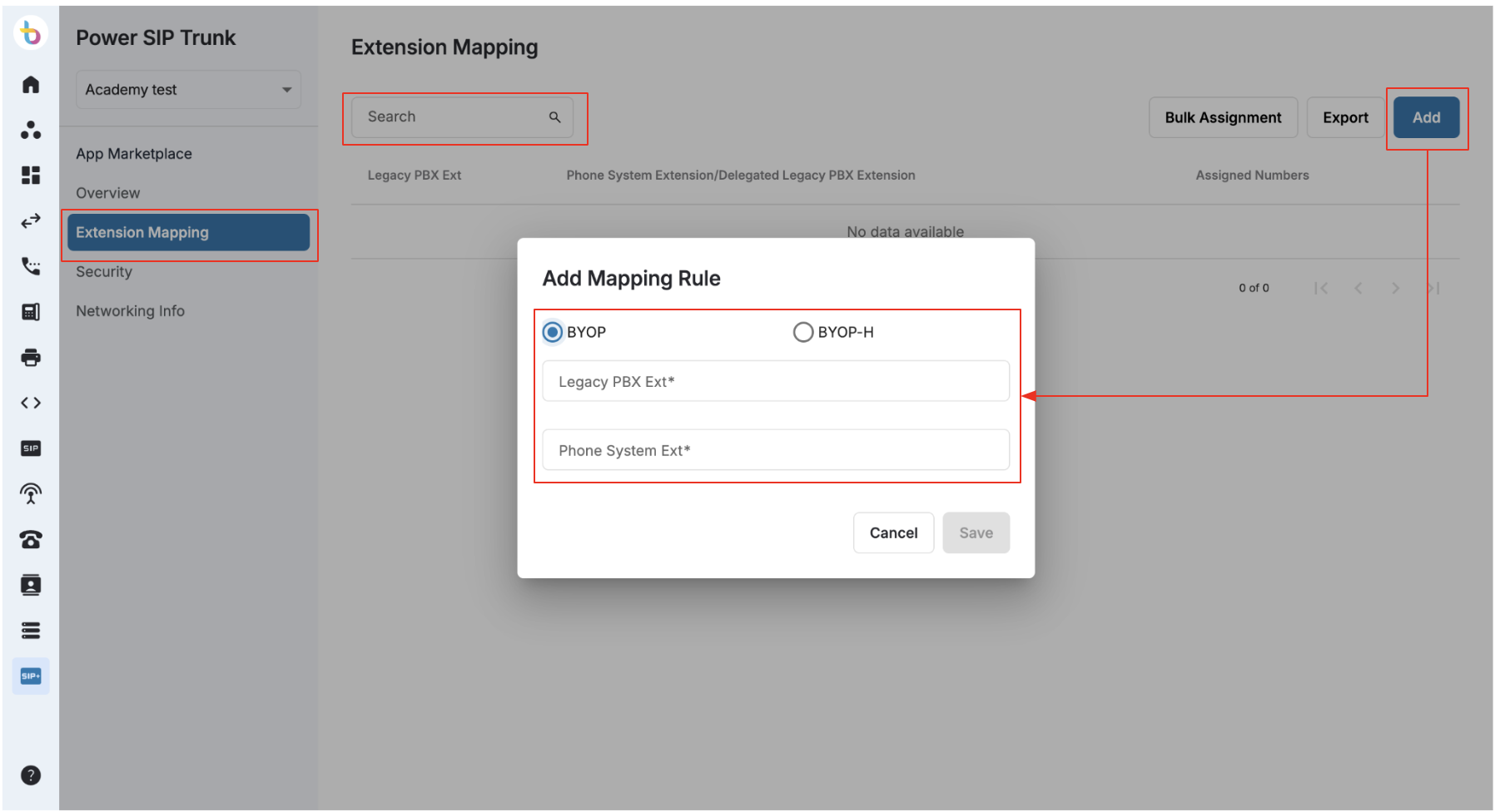 ### BYOP
### BYOP
When BYOP is selected, system allows user to use both CPaaS and customer legacy PBX extension. It comes with Phone System License.
- Legacy PBX Extension
- Your legacy PBX extensions.
- Select Phone system Extension to map with
- Your Phone System extensions which will be mapped to the respective legacy PBX extensions OR your delegated legacy PBX extensions.
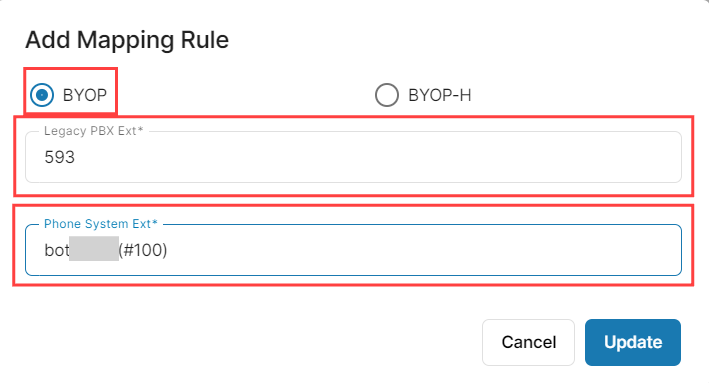 ### BYOP-H
### BYOP-H
If BYOP-H is selected, user only need to put in the Legacy PBX Extension number.
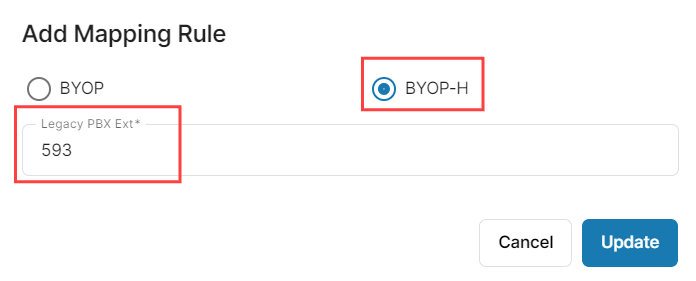 ### Export
### Export
The Export button provides users with the ability to export and review configuration details effortlessly.
Steps to Export:
- Navigate to [Power SIP Trunk]
- Select the desired Power SIP Trunk
- Go to the [Extension Mapping] tab
- Click the [Export] button to download the configuration
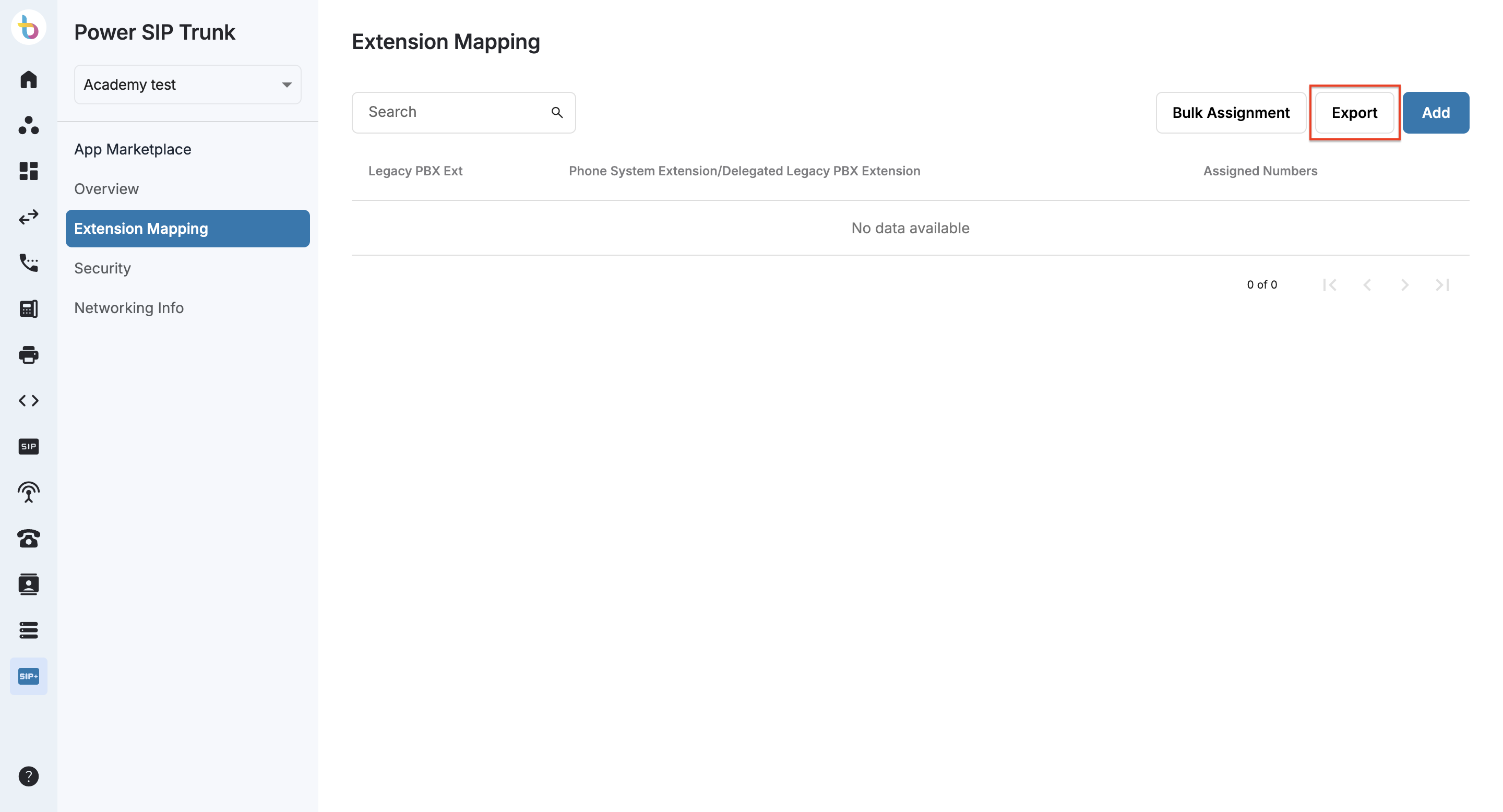 Security
Security
A security page where you can input IP addresses to restrict outgoing calls only to those listed IPs.
 Networking Info
Networking Info
This section shows parameters related to network requirements for the customer side including firewall configuration, NAT configuration and the features which are not supported by the CpaaS BYOP.
This tab will give you information regarding:
- Basic SIP Configuration
- Firewall Configuration
- NAT Configuration
- Not Supported
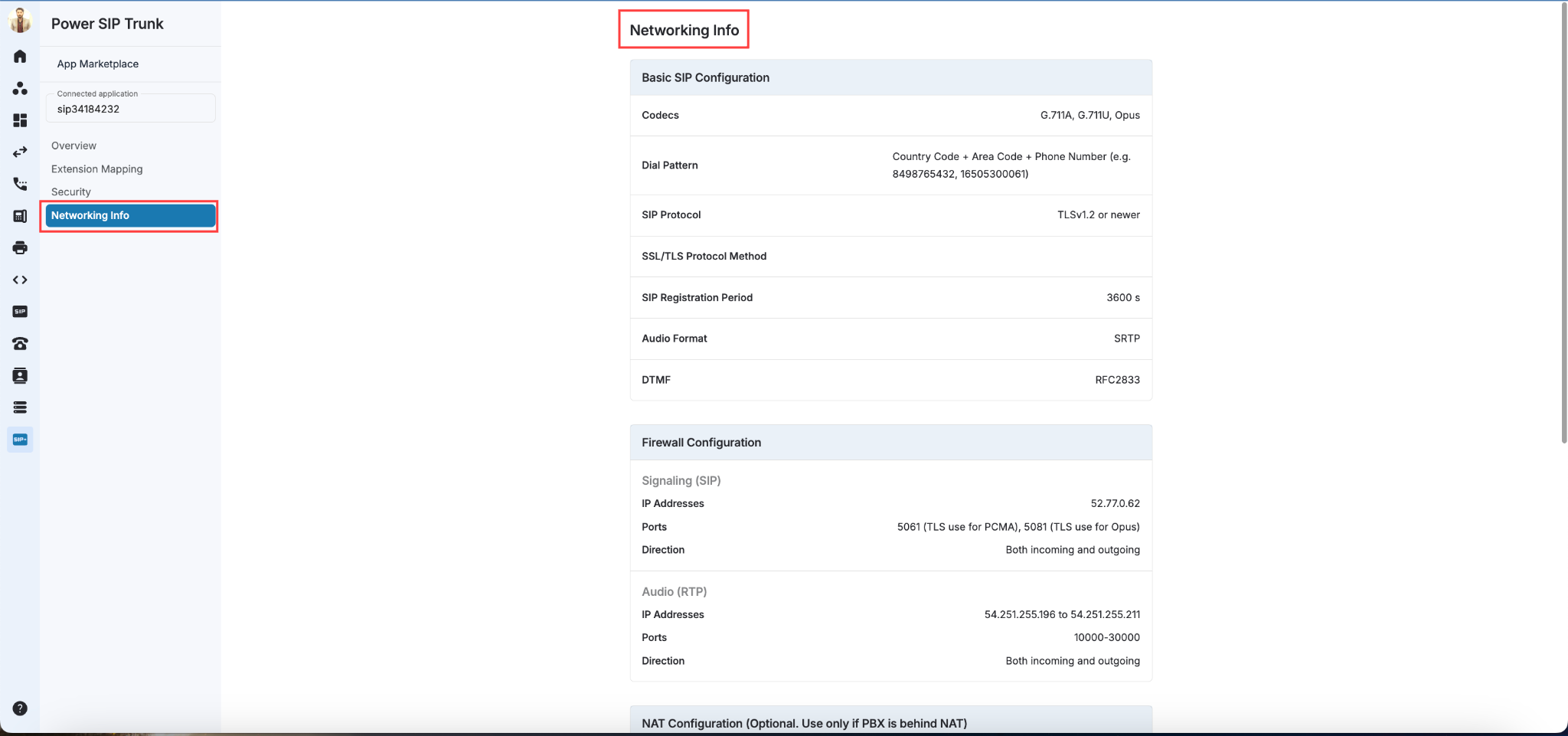 ### Basic SIP Configuration
### Basic SIP Configuration
- Codecs: Our SIP trunk supports two audio codecs – G711A, G711U and Opus. Codecs determine how voice communication is encoded and transmitted.
- Dial Pattern: We accommodate the dialed format of Country Code + Area Code + Phone Number (e.g., 8498765432, 16505300061) to facilitate easy and standardized calling.
- SIP Protocol: Our system supports TLS version 1.2 or newer, ensuring the highest level of security for your data exchange.
- SIP Registration Period: We offer a SIP registration period of 3600 seconds, allowing your devices to maintain a consistent connection.
- Audio Format: Our SIP trunk supports Secure Real-time Transport Protocol (SRTP) for audio transmission, ensuring the confidentiality and integrity of voice data.
- DTMF Mode: Our system supports DTMF (Dual-Tone Multi-Frequency) signaling using the RFC2833 standard, allowing the transmission of touch-tone signals during a call.
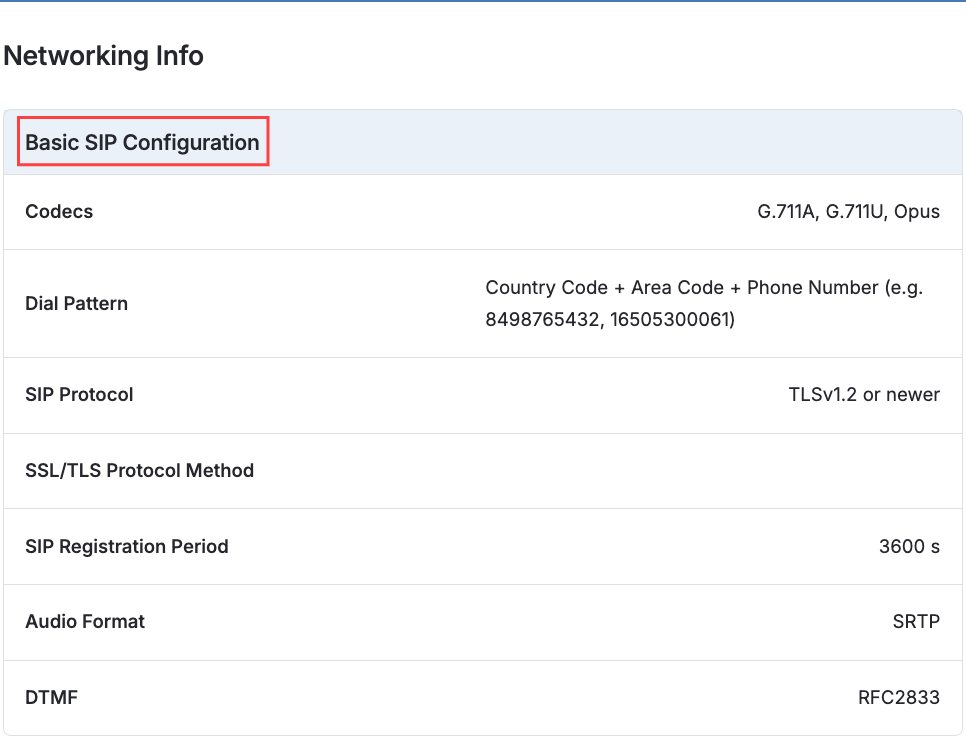 ### Firewall Configuration
### Firewall Configuration
Firewall Configuration: To ensure optimal call quality and avoid unforeseen potential issues, it's crucial for customers to whitelist our IP addresses. By whitelisting the specific IP addresses provided here, you're enabling seamless and secure communication through our SIP trunk.
- Signaling (SIP):
- IP Addresses: Our SIP server's IP address is 52.77.0.62, and it exclusively supports TLS encryption, guaranteeing secure data transmission.
- Ports: We utilize port 5061 (TLS with PCMA codec) and port 5081 (TLS with Opus codec) for signaling purposes, ensuring reliable and encrypted communication channels.
- Direction: Both incoming and outgoing traffic are facilitated through these ports.
- Audio (RTP):
- IP Addresses: The IP addresses for audio transmission range from 54.251.255.196 to 54.251.255.211.
- Ports: The audio transmission ports span from 10000 to 30000.
- Direction: Both incoming and outgoing audio traffic utilize these specified IP addresses and ports.
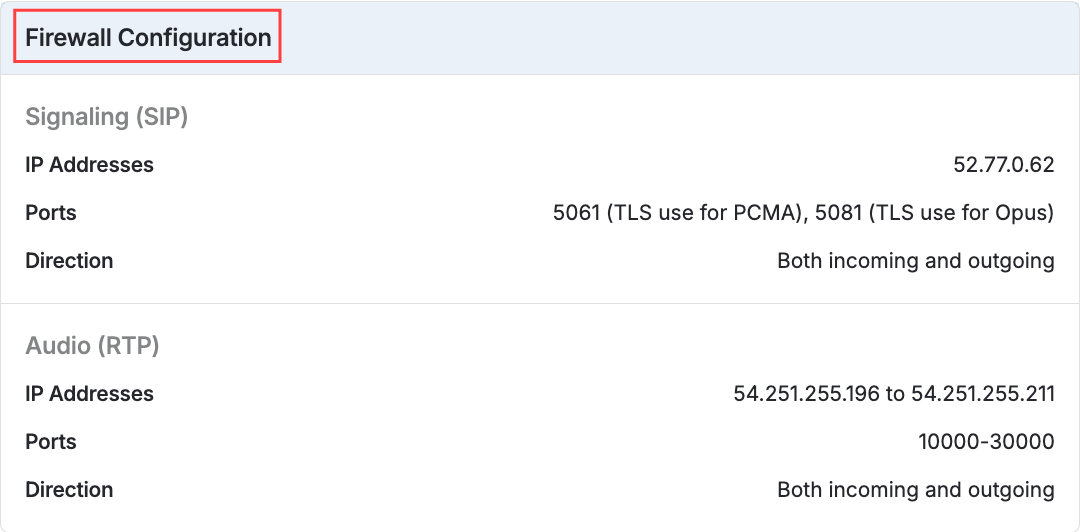 ### NAT Configuration
### NAT Configuration
NAT Configuration is Optional, recommended for PBX behind NAT:
- NAT Traversal: We offer support for STUN (Session Traversal Utilities for NAT) to effectively navigate NAT barriers.
- STUN Server: For seamless NAT traversal, our recommended STUN server is stun.b3networks.com.
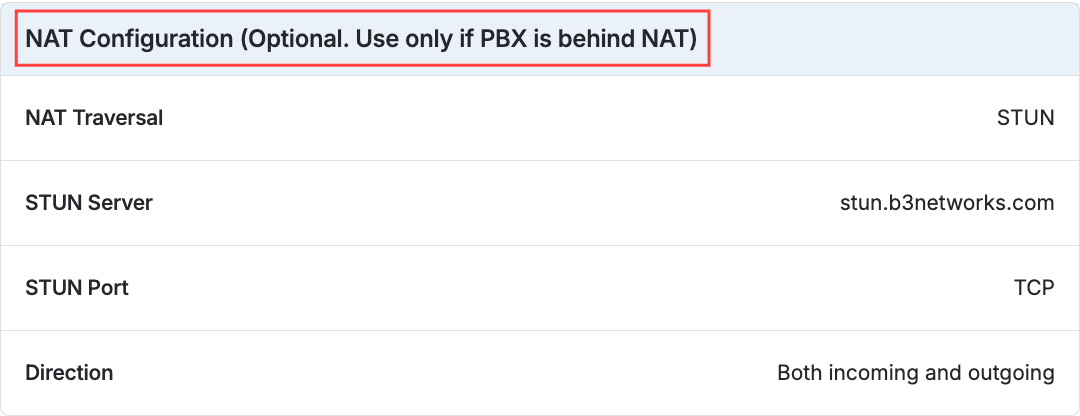 ### Not Supported
### Not Supported
This section is listing all the features which are not supported in CPaaS SIP Trunk.
